Wood types vary widely depending on their size and density.
In this guide, we’ll elaborate on the key features of sweet gum firewood. Is it suitable for burning?
What exactly is sweet gum firewood?
Sweet gum is a hardwood that burns quite intensely and quickly.
The tree thrives in a moderate, humid climate, usually in the Southeastern United States.
It is also a valuable tree for the lumber business, useful in making furniture and decorative items.
Burning Characteristics of Sweet Gum Firewood
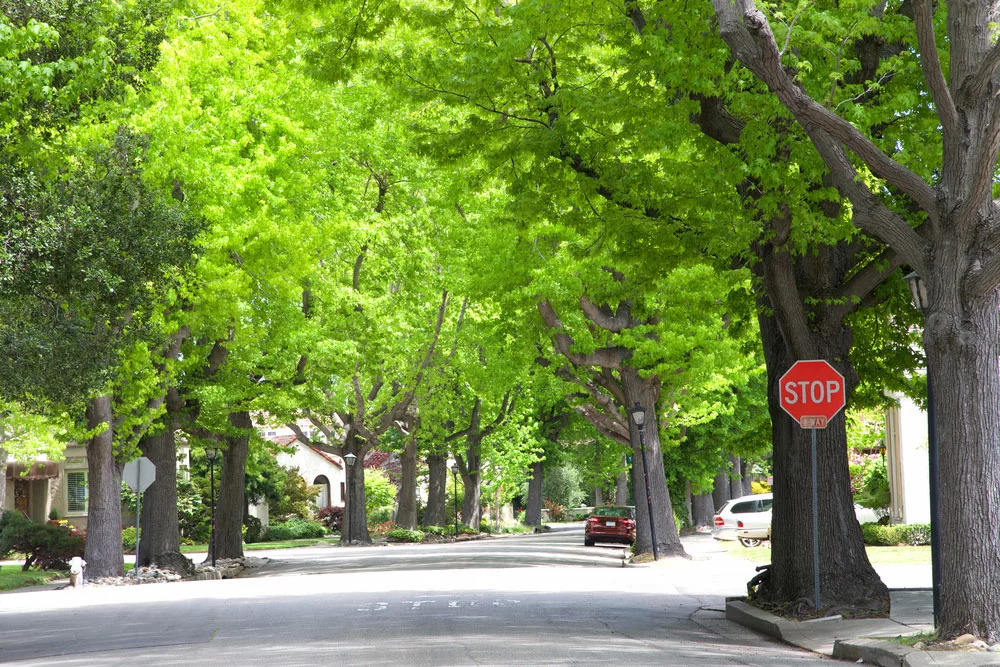
American Sweetgum tree lining a neighborhood in Northern California.
Let’s look at some of the properties of sweet gum firewood.
Seasoning Time

A Cord of Split Firewood.
Sweet gum requires approximately a year to thoroughly season before using it as firewood.
Also, the sweet gum firewood might contract up to 15% during seasoning.
It makes it more difficult to split the wood, and it also impacts the wood’s general appearance.
Creosote Buildup
Although Sweetgum does not create a lot of creosote, you still need to clean your chimney occasionally.
Notably, sweet gum firewood has a relatively high moisture content for hardwood while green.
It also has significant resin content.
Heat Production
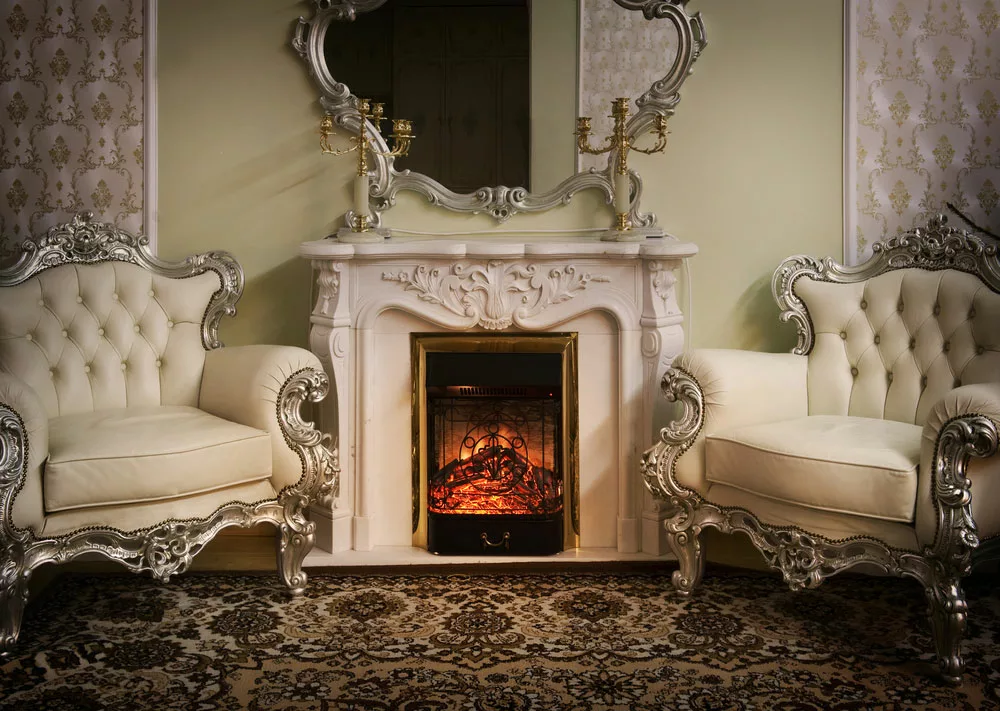
A Victorian fireplace.
With a heat production of 20.6 to 21.3 million BTUs /cord, sweet gum ranks at the middle of the heat output range.
Also, although its a hardwood, you should consider burning it with better-grade firewood like oak.
Primarily, this is to sustain its burning since sweet gum burns quickly. Besides, sweet gum burns with a lot of ash.
Splitting

A young man splits firewood.
The main difficulty with using sweet gum as firewood is breaking it. Primarily, this is due to the warp that results when the wood dries out.
It causes the fibers to intertwine, making them harder to cut through.
Thus, splitting the logs while it’s still greenwood would be best.
Else, the task will become challenging due to moisture loss when it dries.
Smoke Production

Huge dark smoke rose from a chimney.
When you properly season and dry sweet gum firewood, it will yield low smoke while burning.
However, unseasoned sweet gum gives a lot of smoke.
Also, remember that even after it’s completely dry, sweet gum still sparks, albeit minimally.
Therefore, you should employ a fireplace glass screen before your stove to prevent these sparks from being hazardous.
Coals
Sweet gum ignites quickly. Irrespective of this property, sweet gum yields low-quality coal and burns for short periods.
Hence, it would be best to burn it alongside other hardwood species like Beechwood, Oak, or Hickory firewood to sustain its burning period.
Burning Smell
The smell of sweet gum is not intense or distinctive.
The firewood may also develop a musty smell if left moist for a long time.
Varieties of Sweet Gum Firewood
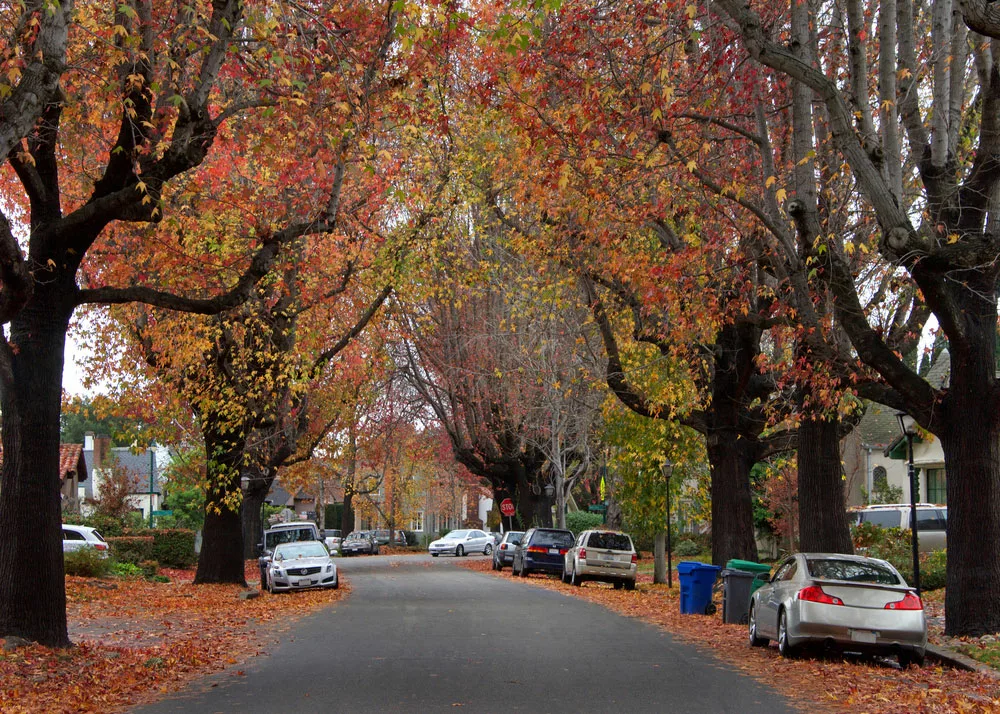
A tall Liquid Ambar, commonly called sweetgum tree.
There is an extensive array of sweet gum species.
Each type is prominent for its distinctive burn properties; let’s briefly look at some.
- American Sweetgum
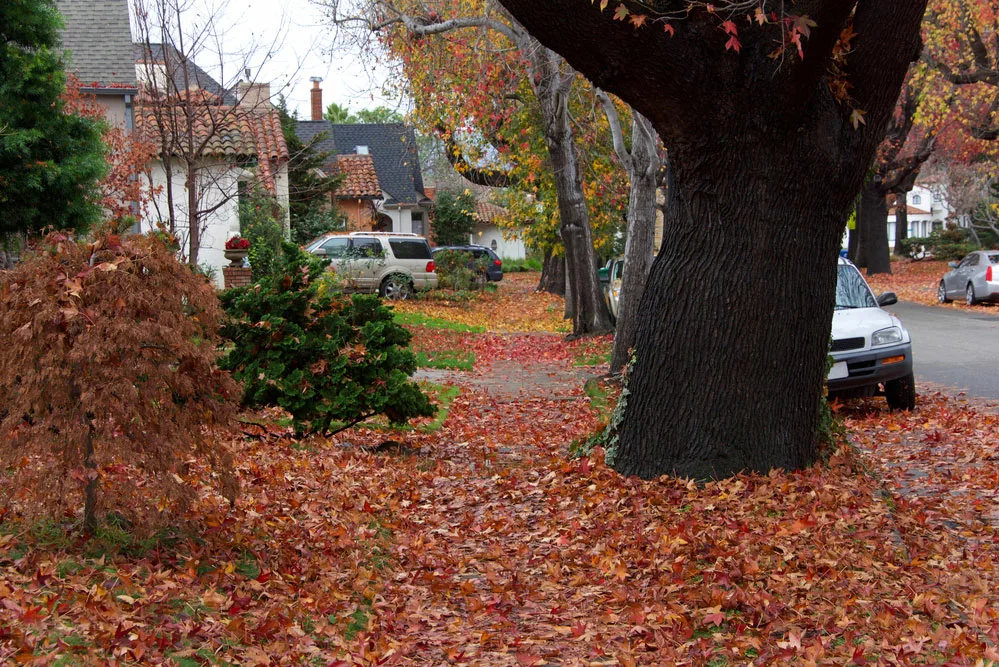
Thousands of autumn leaves fall from sweet gum trees.
It generates a significantly large, shaded tree that reaches heights of 60 to 80 feet and a width of around 60 feet.
Hence, consider this species if you’re looking for an ideal landscaping tree.
Also, this sweet gum species doesn’t require much maintenance.
- Slender Silhouette
These trees are tall and reach about 50 ft. They are also very skinny and grow in a column form.
Lastly, they thrive in small areas and grow faster than other sweetgum species.
- Sweetgum ‘Worplesdon’
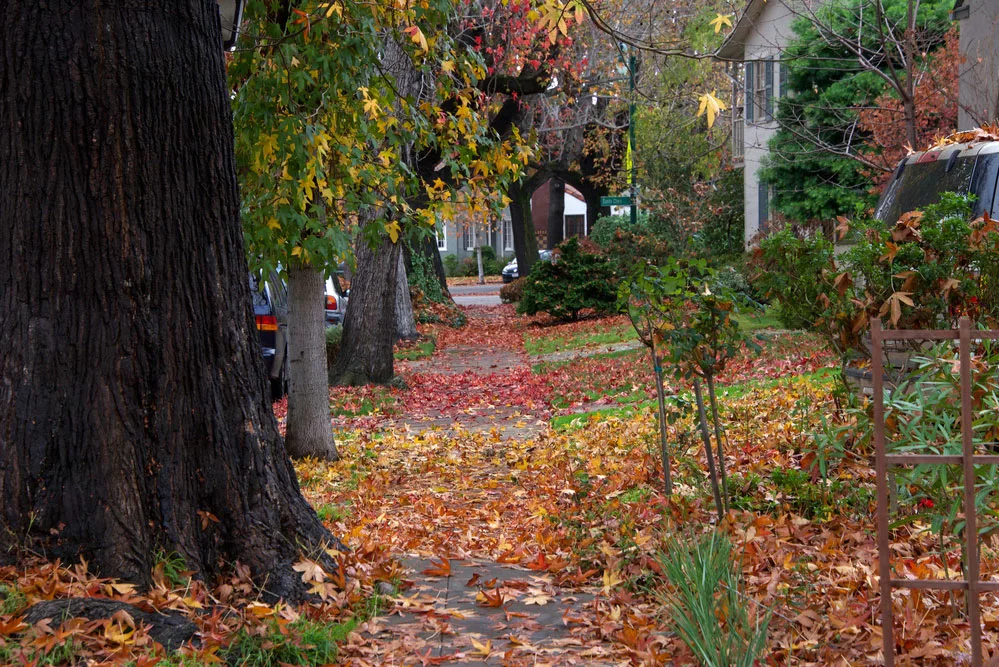
American Sweet Gum Leaves.
This sweet gum tree is shorter than the others.
Worplesdon trees may thrive in USDA zones 5-9 and do well in full sunlight.
- Fruitless Sweetgum
The cultivar is popular among landscapers because it is less messy than other sweet gum trees.
They grow to heights of around 70 feet and are common in expansive garden settings in USDA zones 6 to 9.
- Sweetgum ‘Variegata’
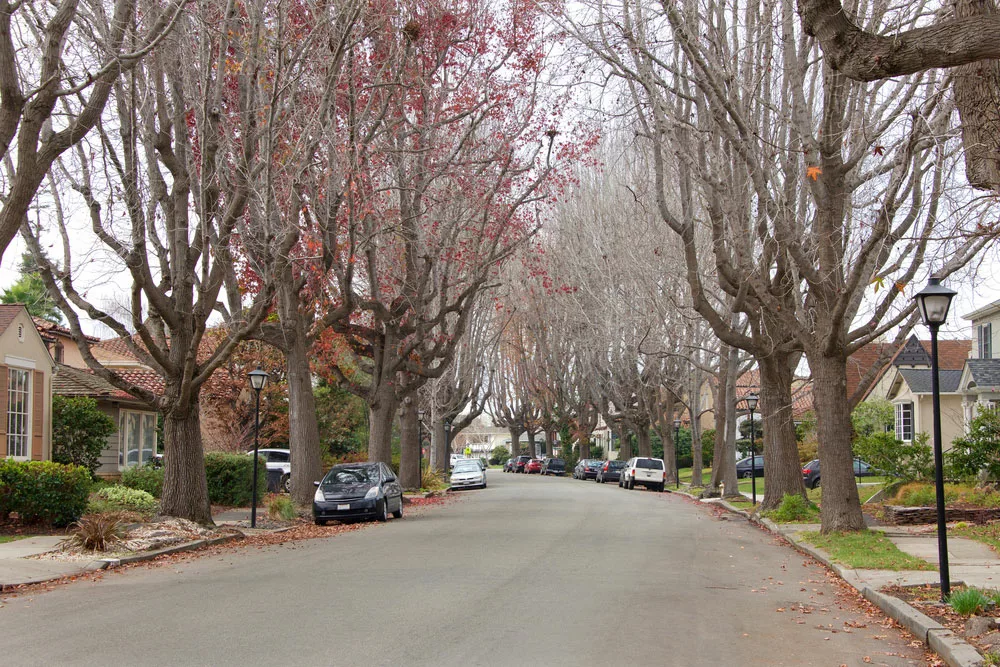
Sweet Gum Tree.
Green and cream-yellow star-shaped leaves cover the tree. They grow medium in size, and they are very bushy.
- Sweetgum ‘Lane Roberts’
During fall, they are distinctive for their dark leaves. They are an excellent choice for small and average landscapes.
Identification of Sweet Gum Firewood
Here are some things to look out for when identifying sweet gum firewood.
Tree Leaves
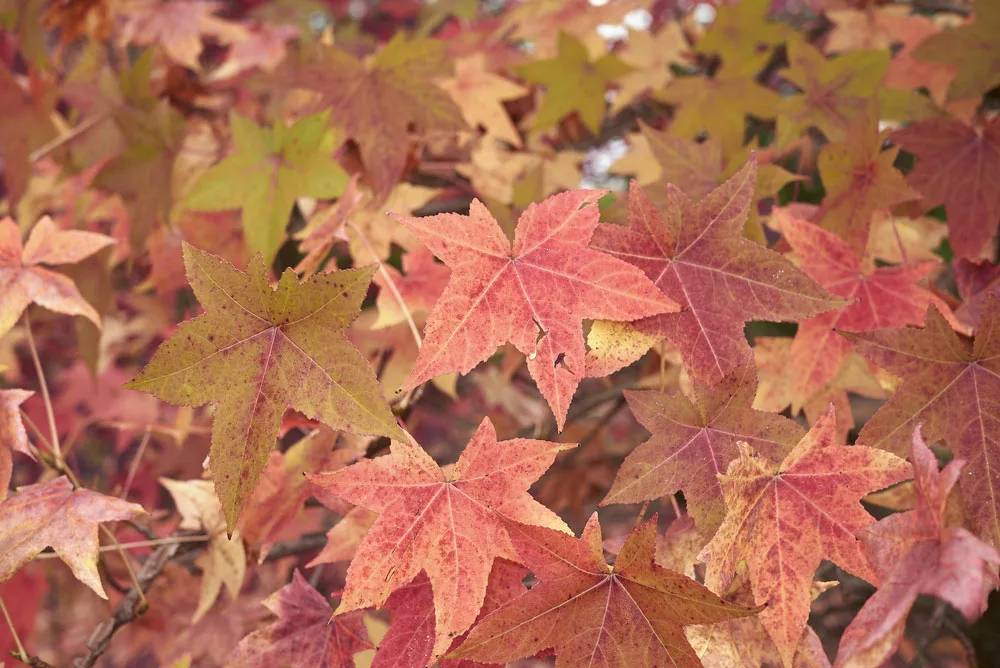
Multicolored foliage of Liquidambar styraciflua tree leaves.
Sweet gum leaves have distinctive star shapes. They also have a single alternating pattern on the branches.
Fall brings a vast spectrum of leaf color changes, from yellow to purple.
Outward Appearance

Top view of a red American sweetgum tree.
Sweet gum tree varies in size from medium to large. When growing in the wild, they can reach up to 150 feet.
However, they can only grow to 50 to 70 feet under cultivation.
Besides, the tree’s trunk has a diameter of up to three feet.
It is symmetrical in structure and has a lifespan of about 400 years.
Sweet Gum Fruit
Sweet gum fruits grow in groups with spikes covering their surface.
Thus, they can cause injuries if you walk on them.
The fruits also usually start green and eventually develop stiff brown rigid structures.
These fruits range in size from one to three inches and contain many seeds.
Bark
It has a pale gray bark with scaly ridges and relatively deep grooves.
Eventually, as the tree matures, the bark of sweet gum trees may become greyish brown.
Comparison to Other Woods
Here is how sweet gum compares to other firewood trees.
| Firewood Tree Species | BTU value per cord (in millions) | Firewood ease of splitting | Coals Quality | Overall Firewood Quality |
| White Pine | 15.0 | Easy | Poor | Fair |
| Green Ash | 20.0 | Easy | Good | Exemplary |
| Sweet Gum | 20.6 | Difficult | Poor | Poor |
| Maple | 25.5 | Easy | Exemplary | Exemplary |
| Bur Oak | 26.2 | Easy | Good | Exemplary |
More Uses for Sweet Gum Wood
- Medicinal Uses

Sweet gum has medicinal value.
You can use it to treat patients with rheumatic pain, dysentery, and diarrhea.
It also effectively treats infections like topical herpes, angina, and bedsores.
- Ecological uses
Animals like Carolina chickadees, white-tailed deer, squirrels, mourning doves, green darners, and beavers live comfortably in the tree.
- Commercial Uses

Sweet Gum is also useful in furniture work.
You can use its timber to create panels, doors, furniture, and cabinets.
- Ornamental Uses
The trees are gigantic and have complete crown-like appearances.
Therefore, they provide plenty of shade in gardens, streets, and parks.
Conclusion:
Sweet Gum wood for firewood burns hotter than other types of wood and produces less smoke if you season it well.
Moreover, it is drought-resistant and pest free compared to other trees.
However, it is hard to split and also has poor coal quality. For more, contact us.
